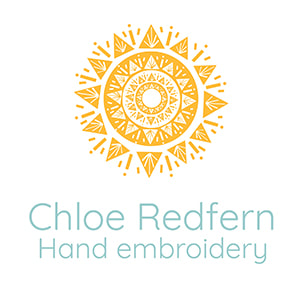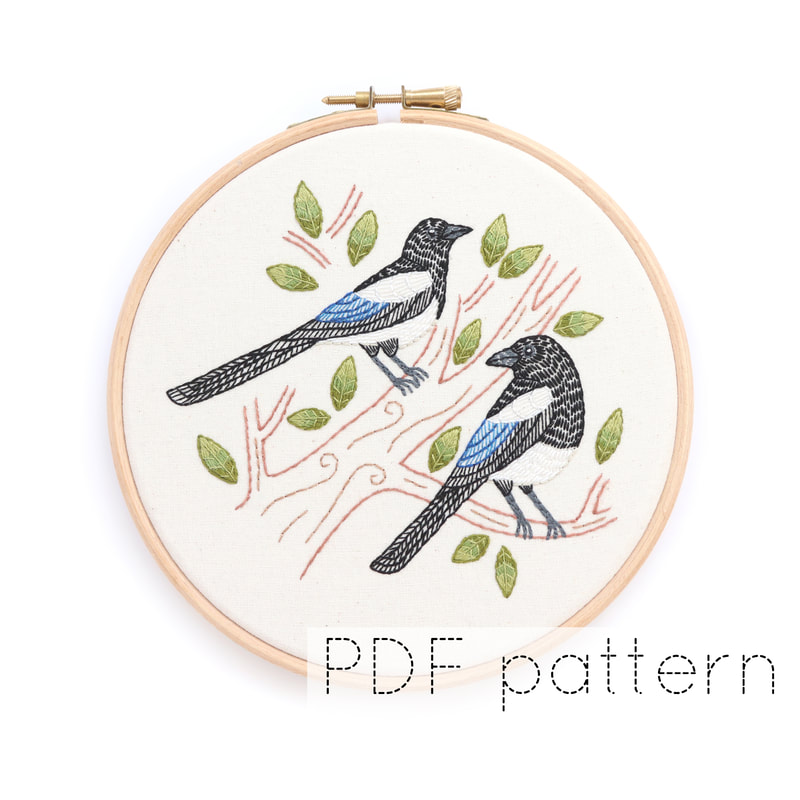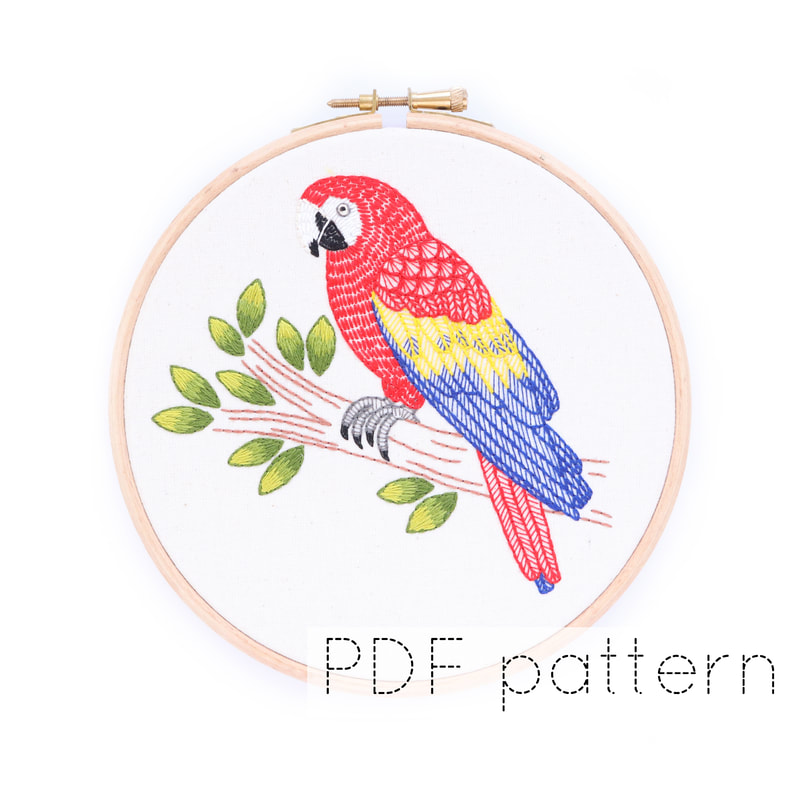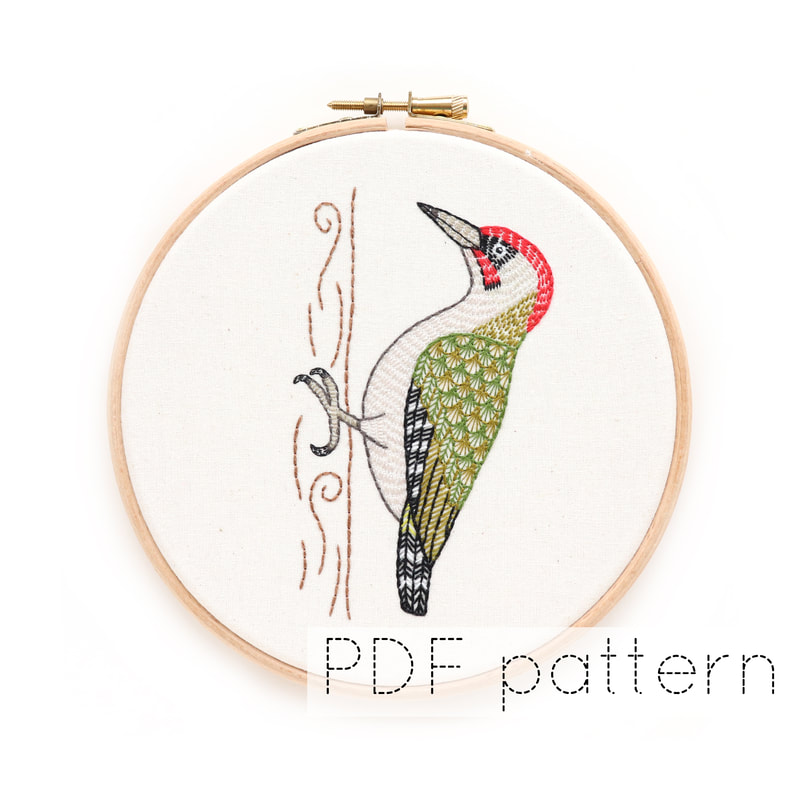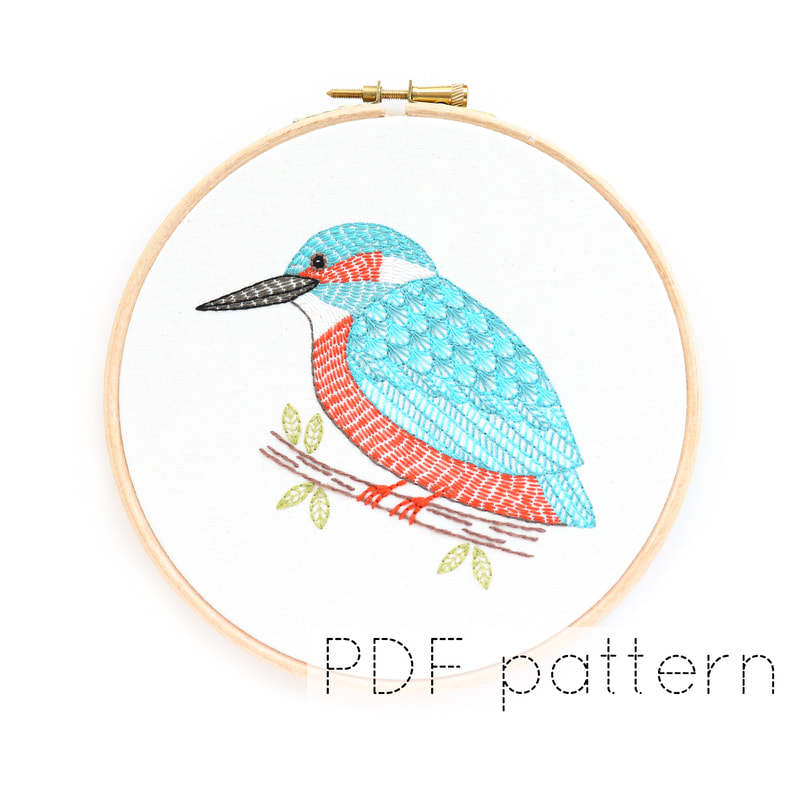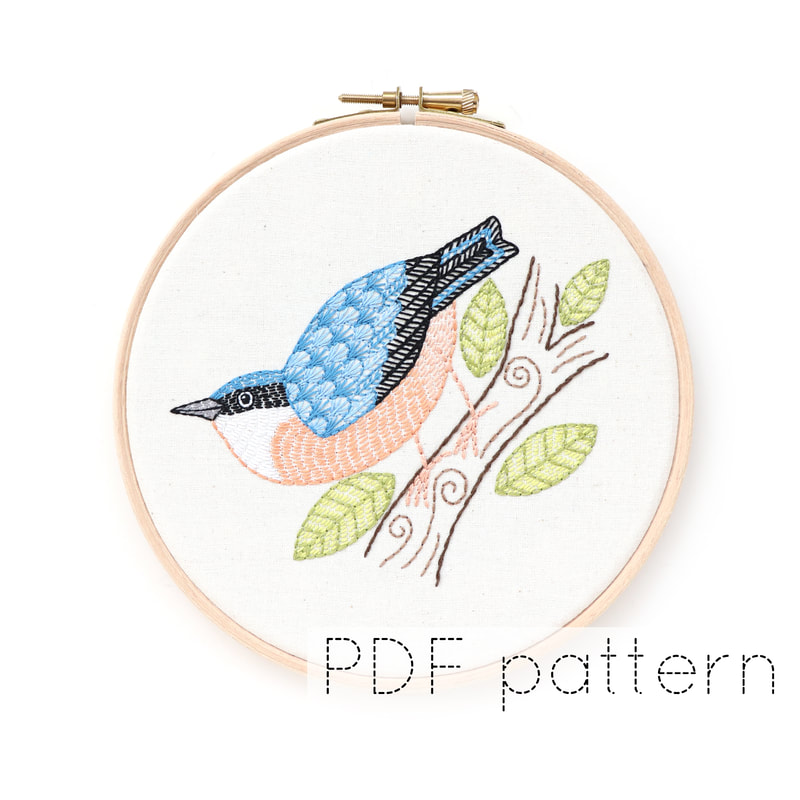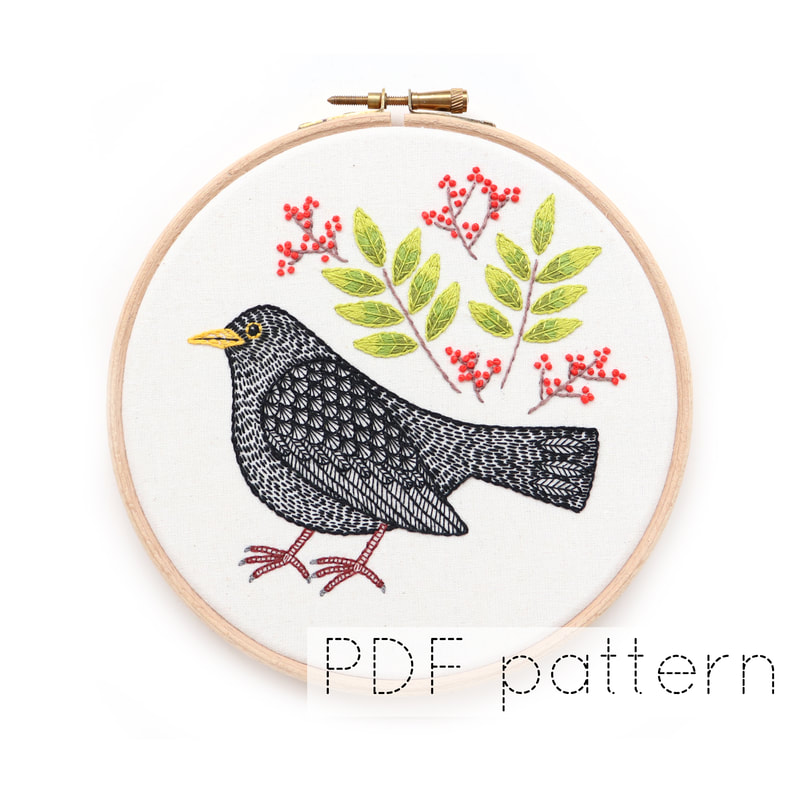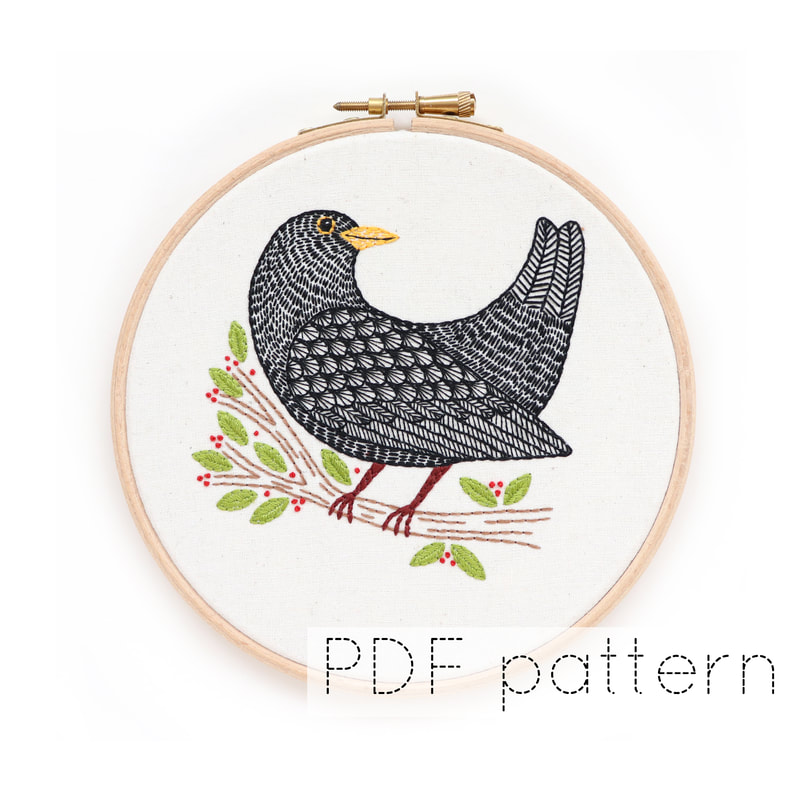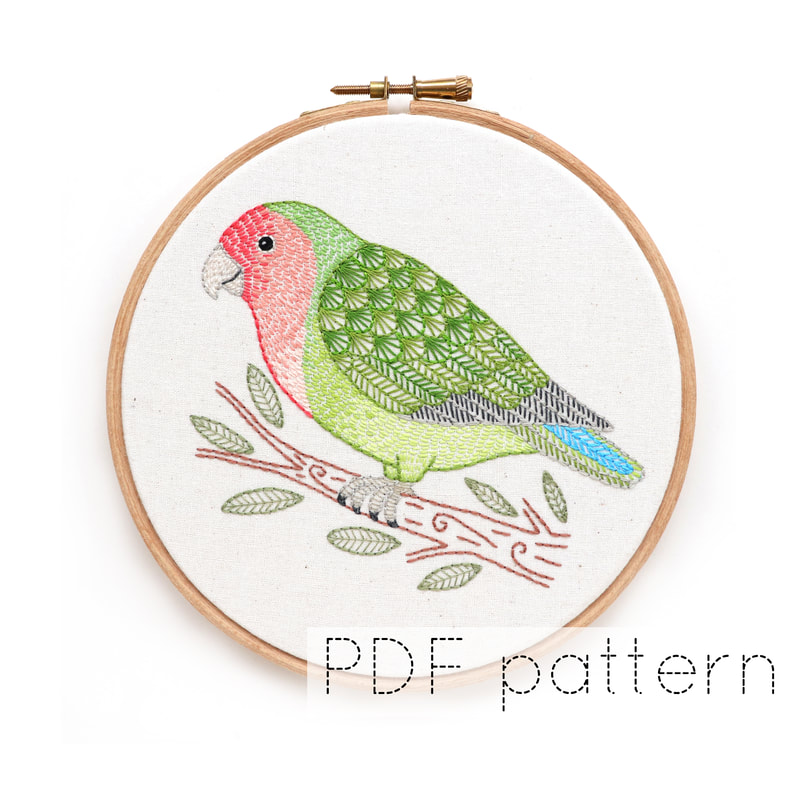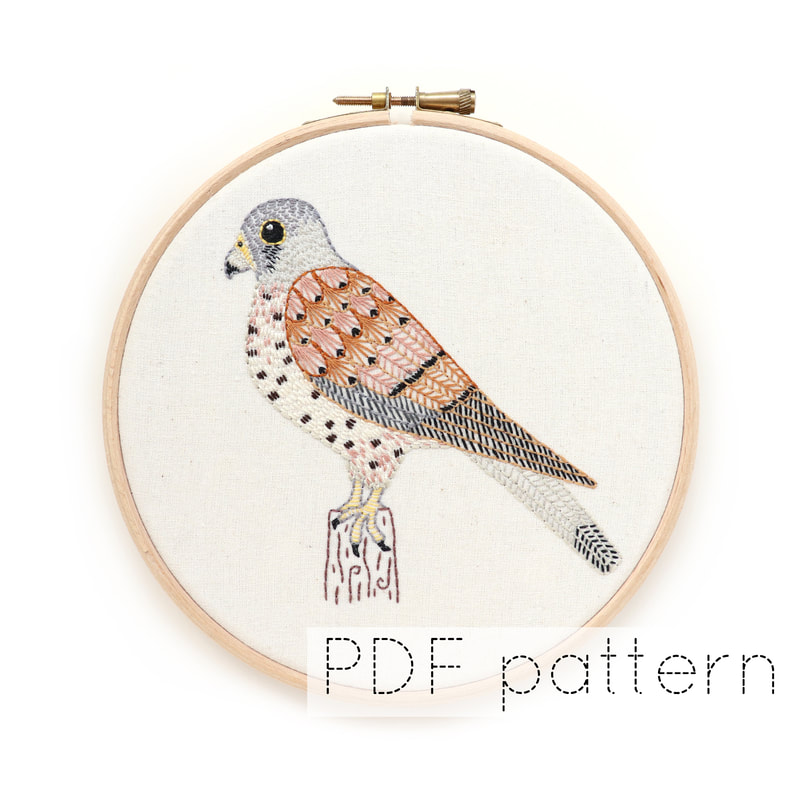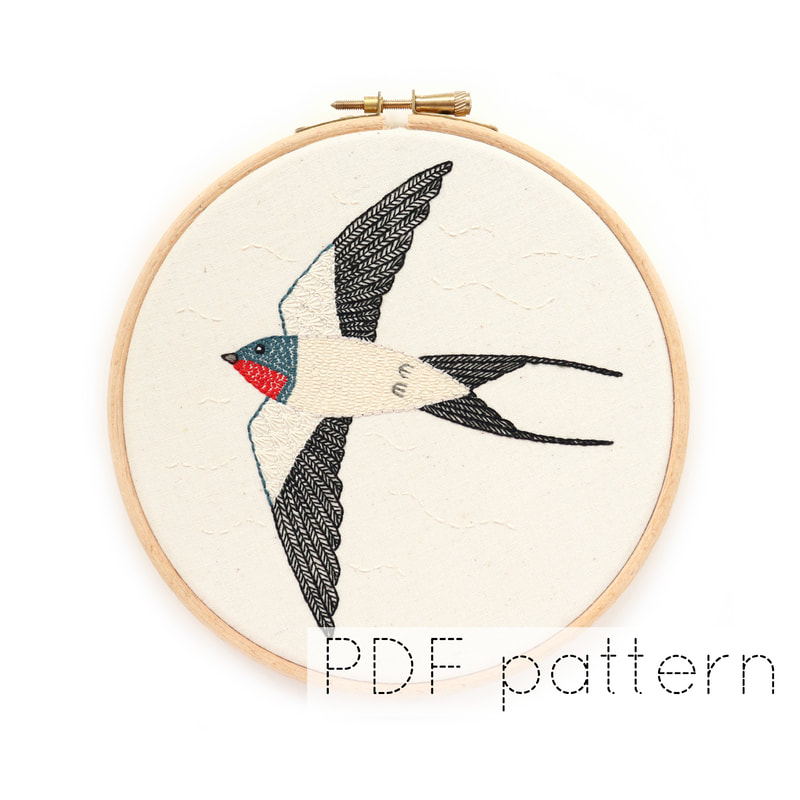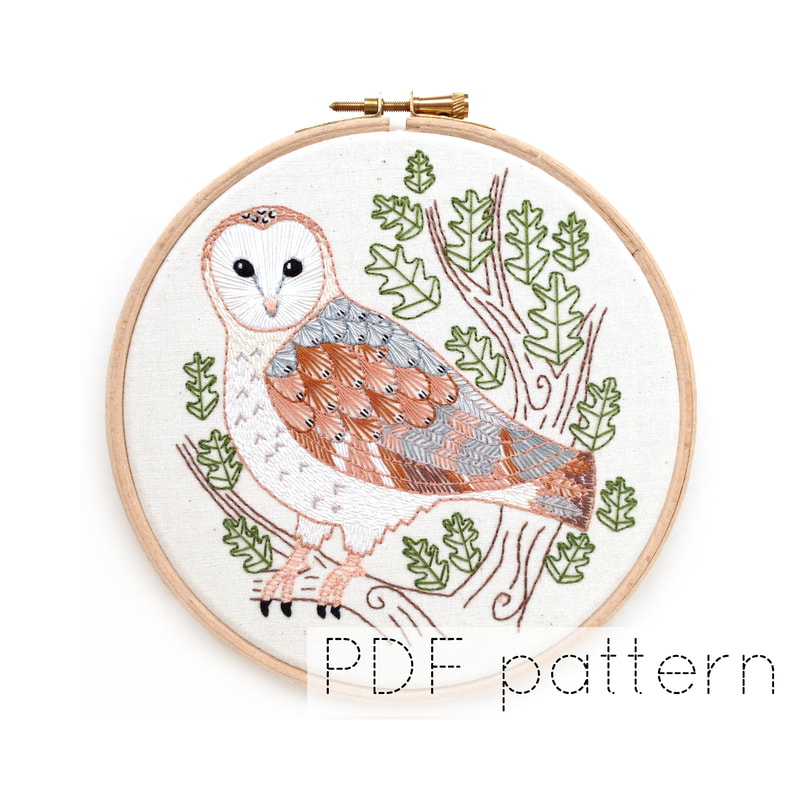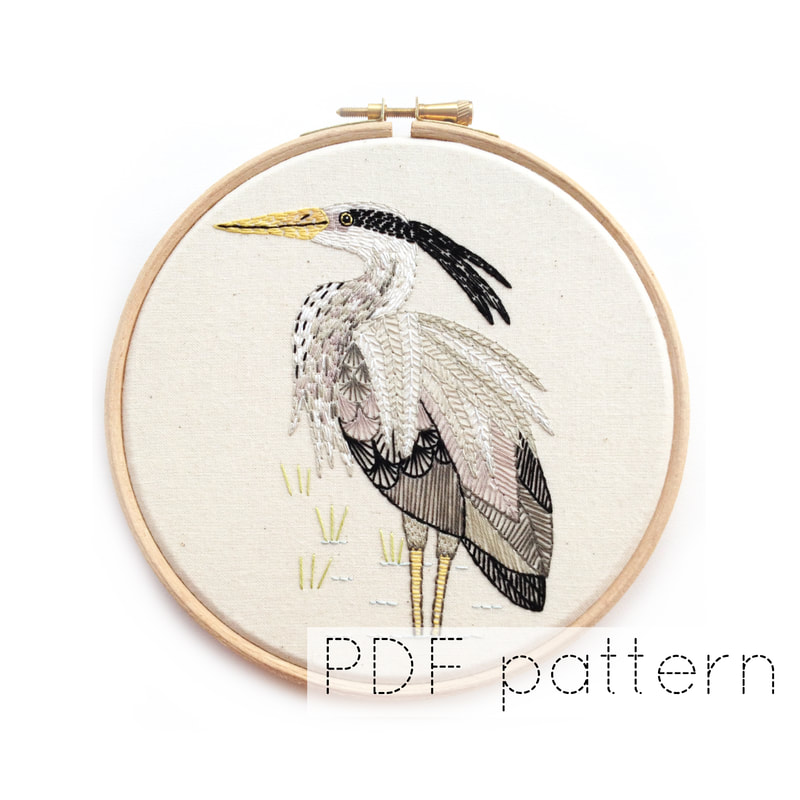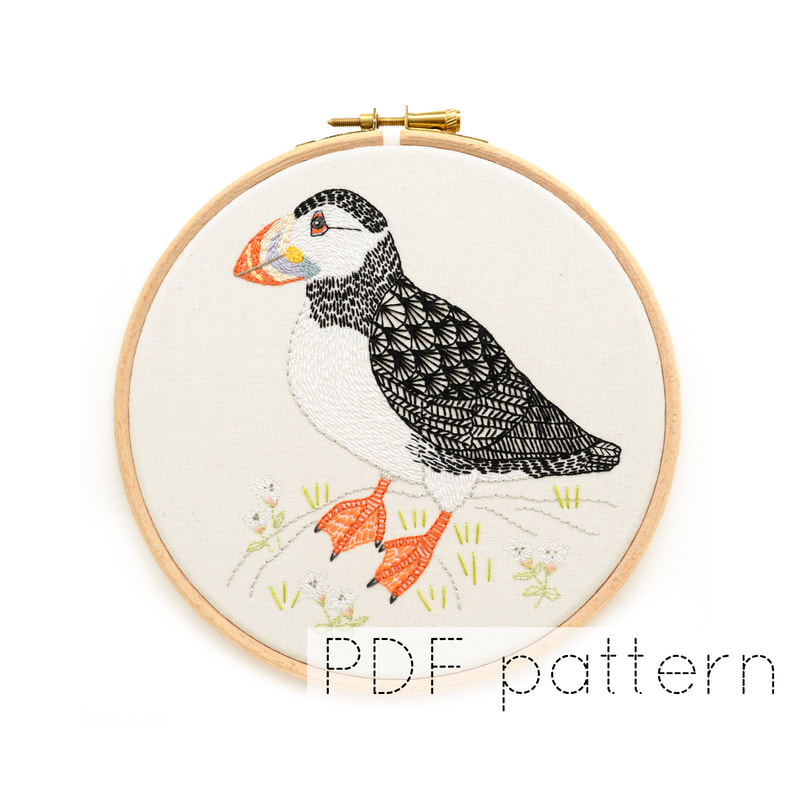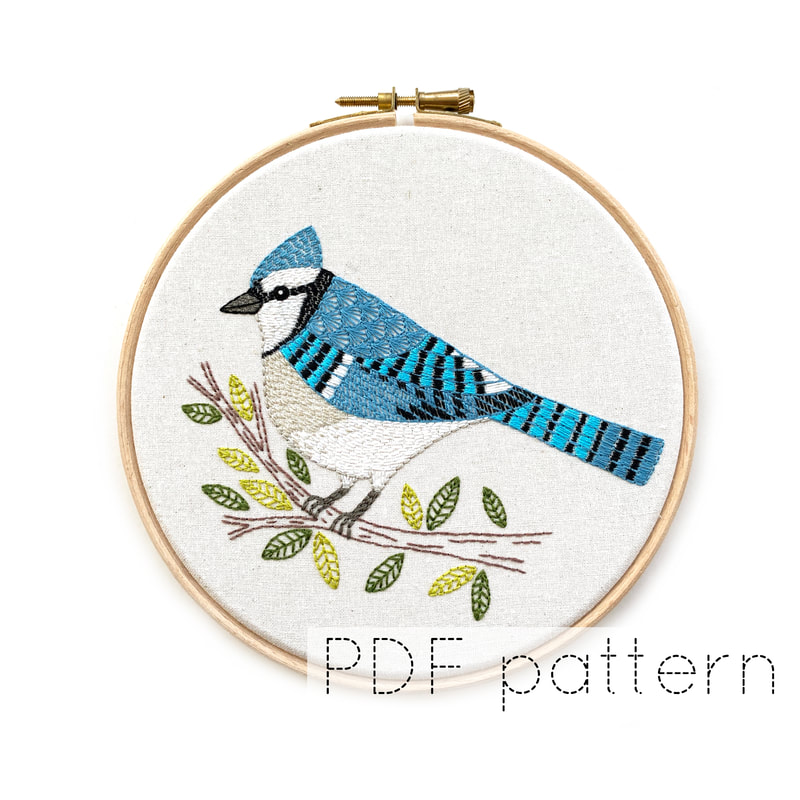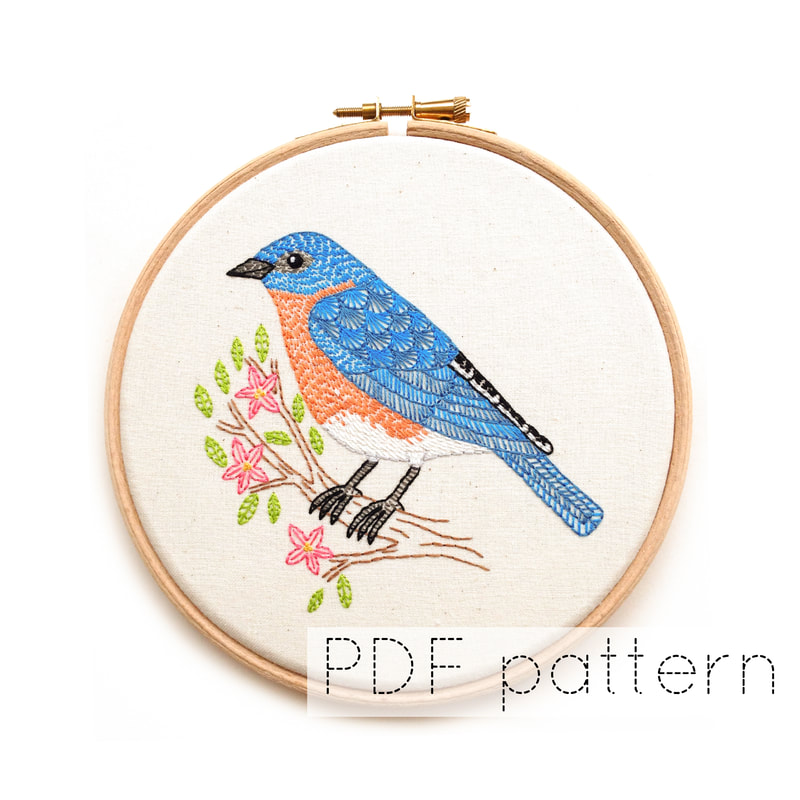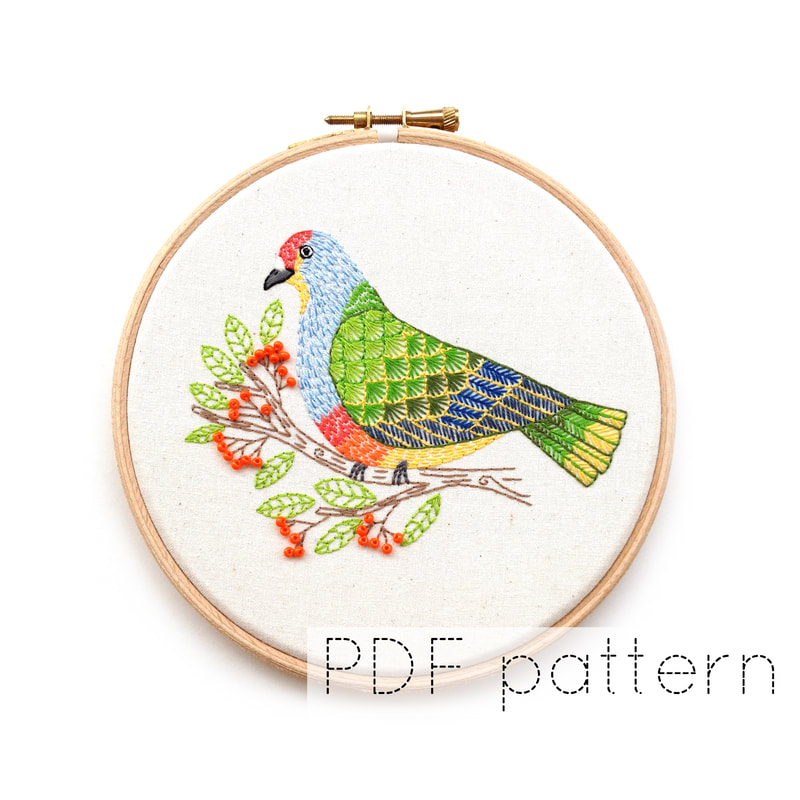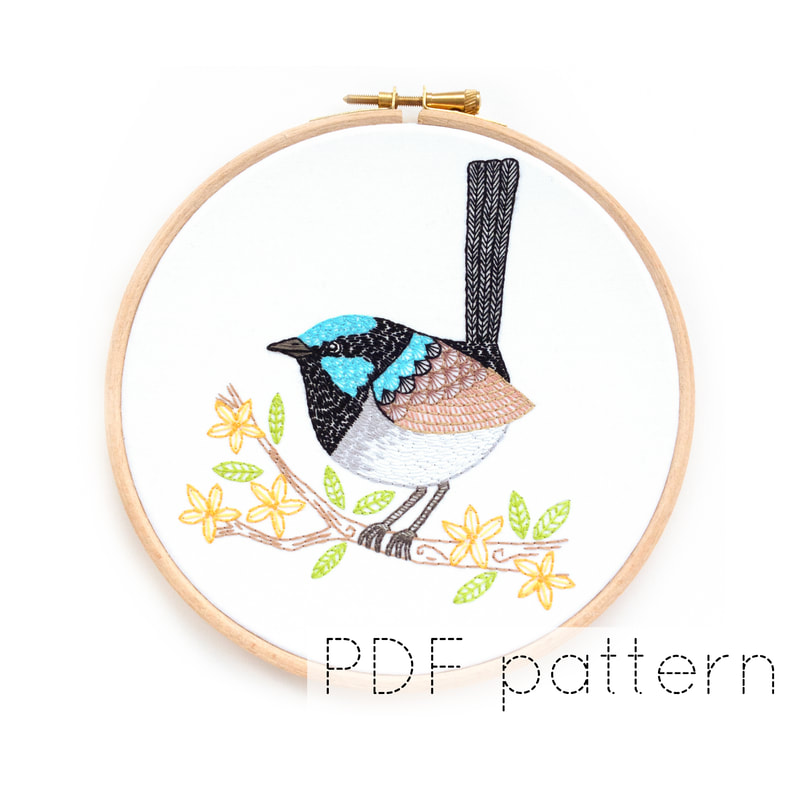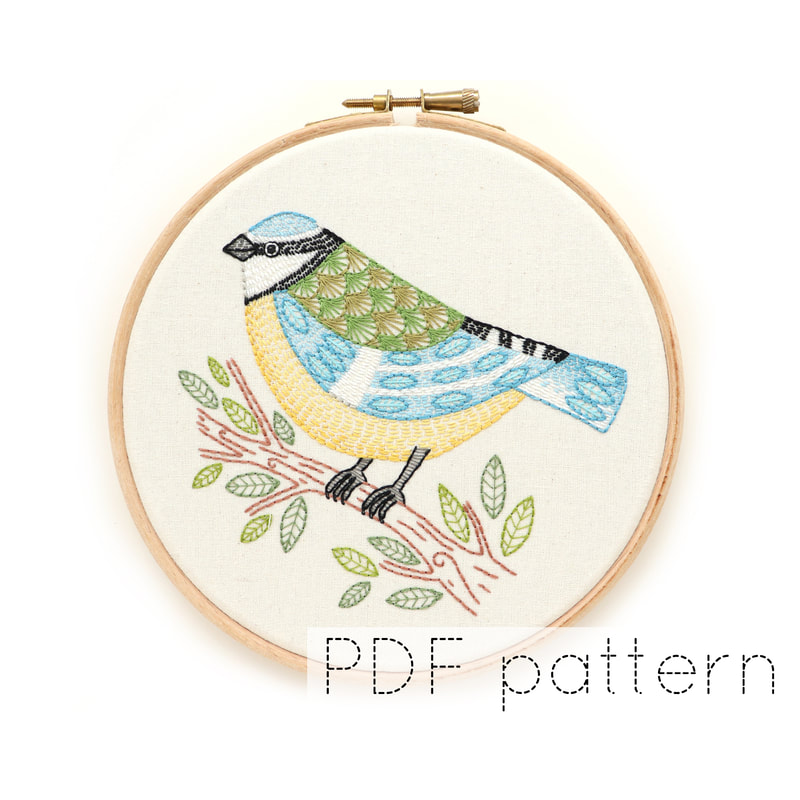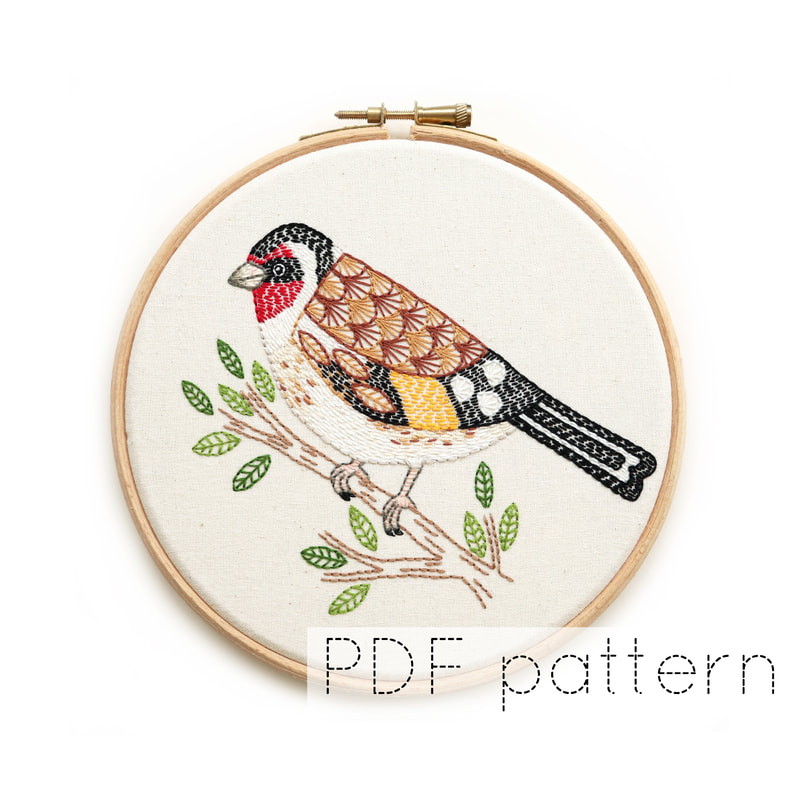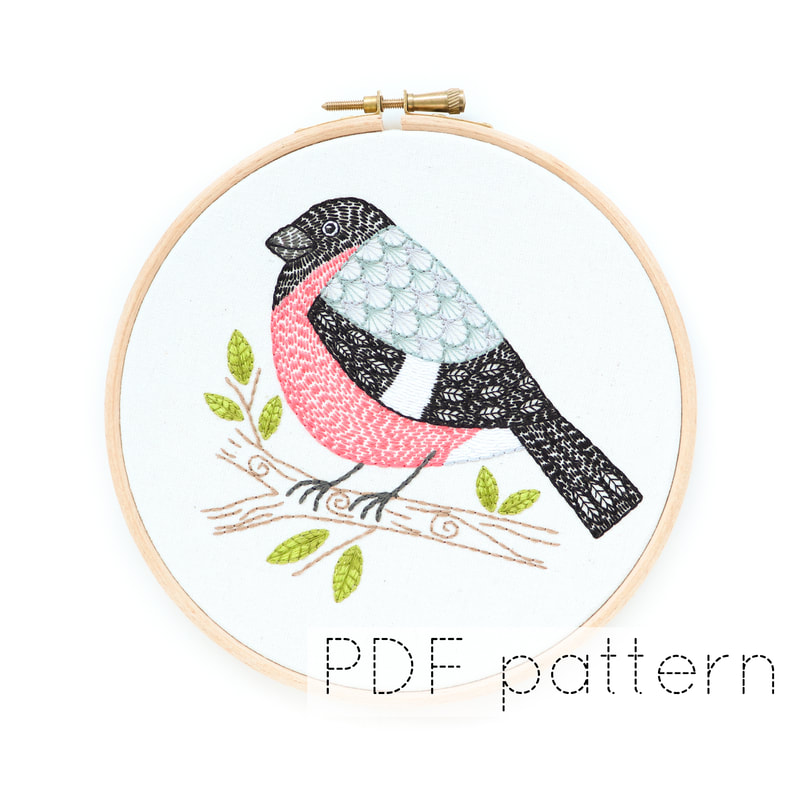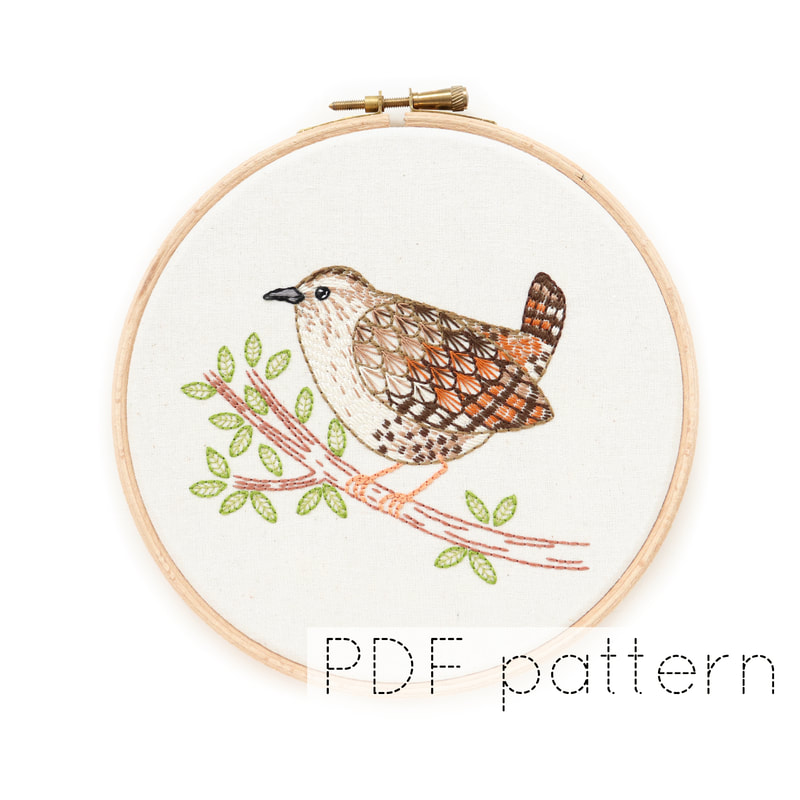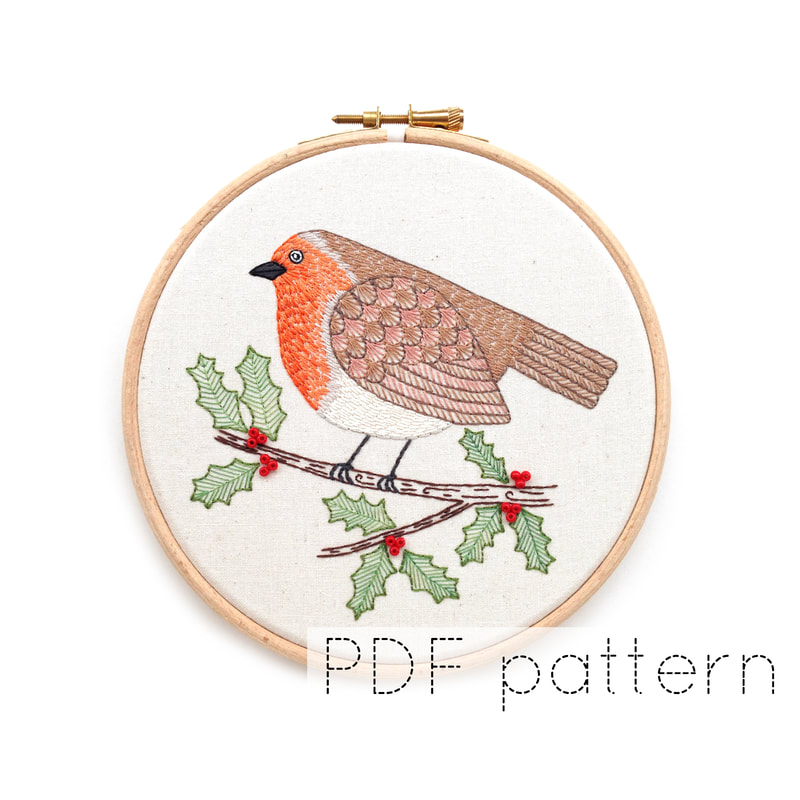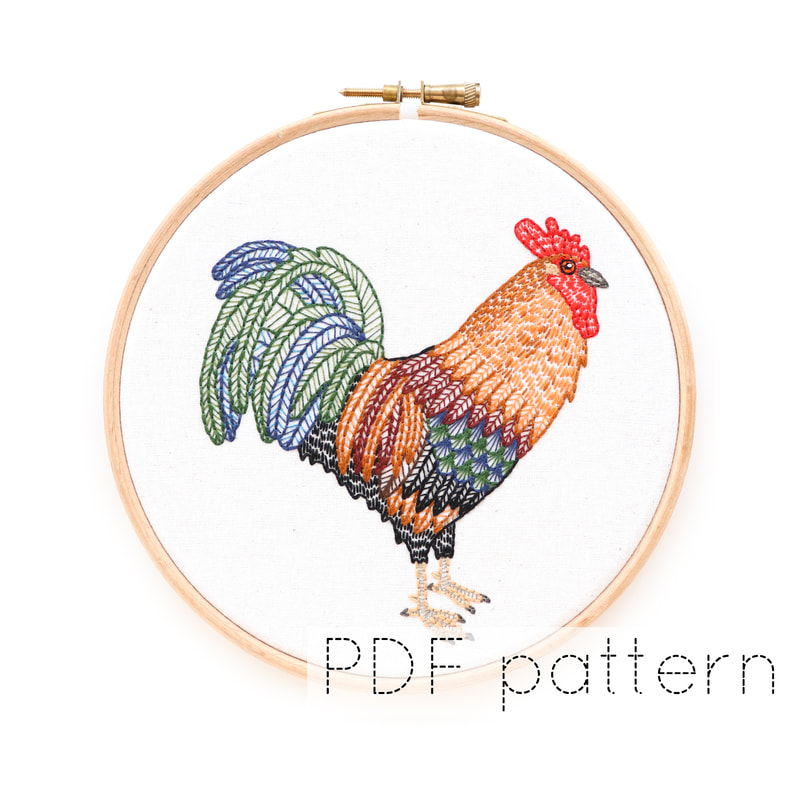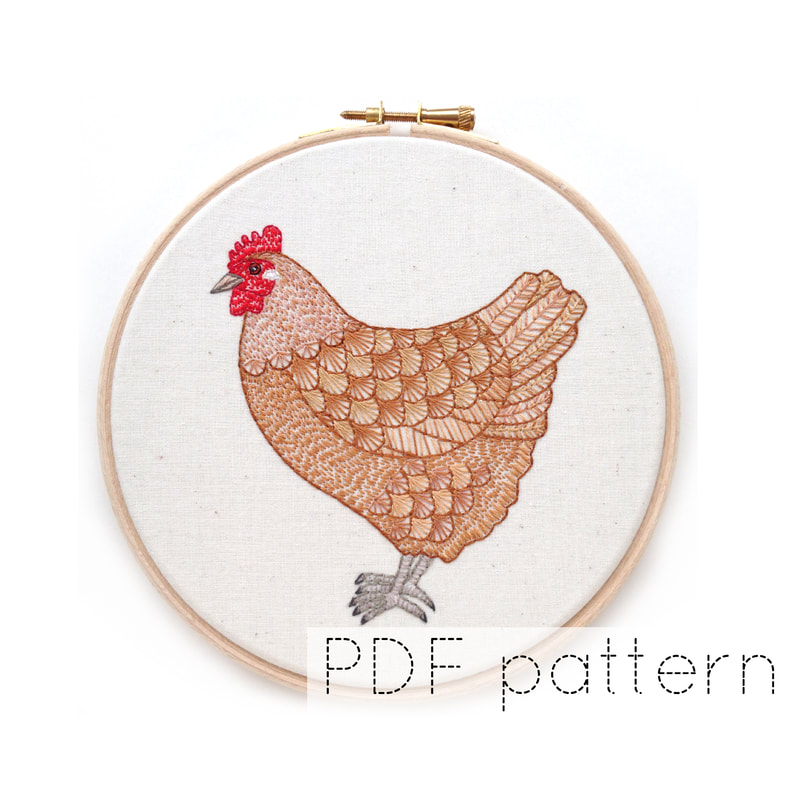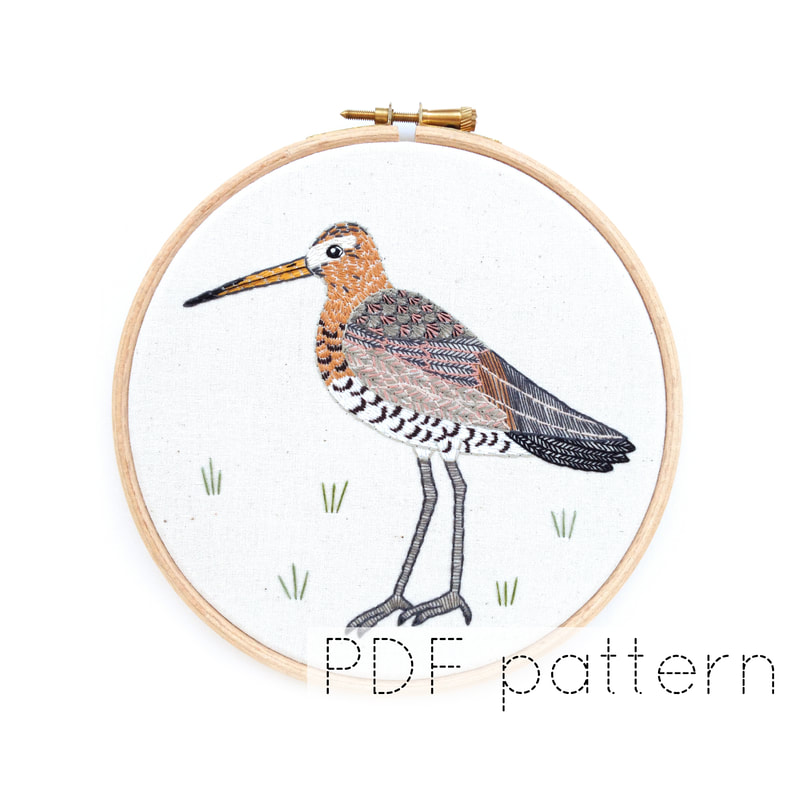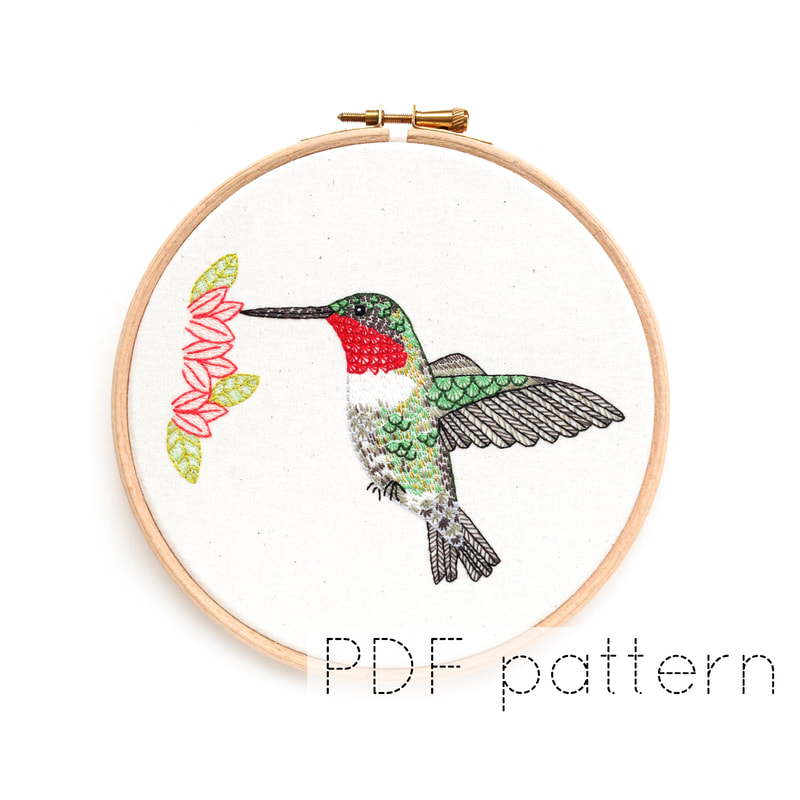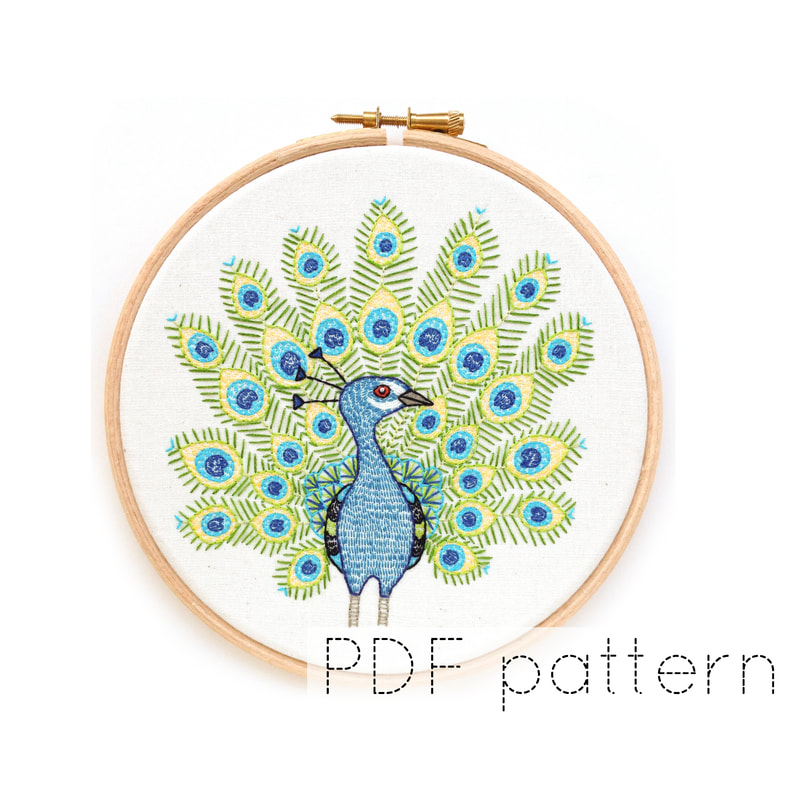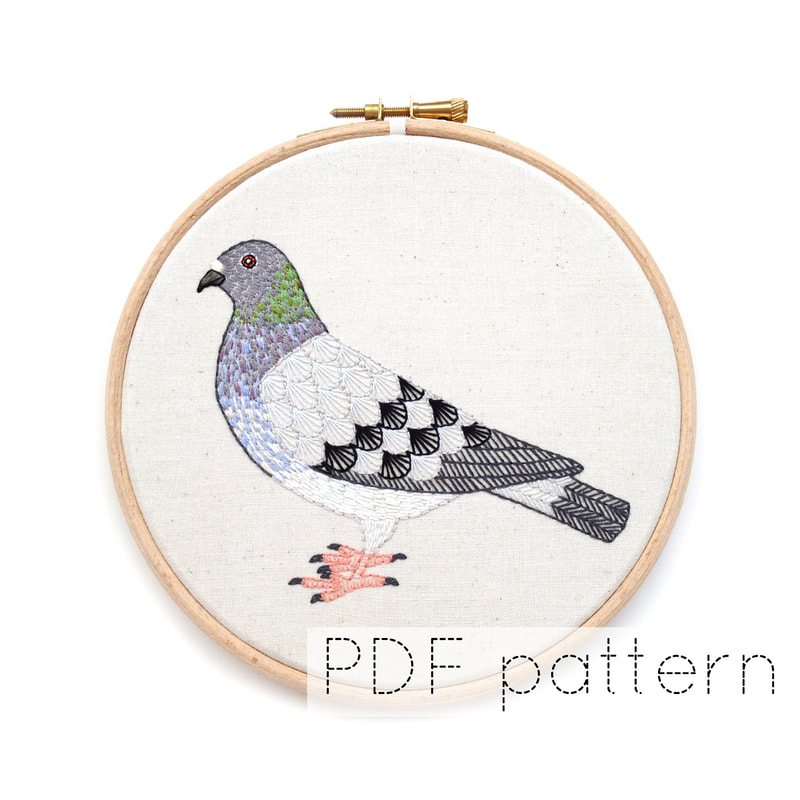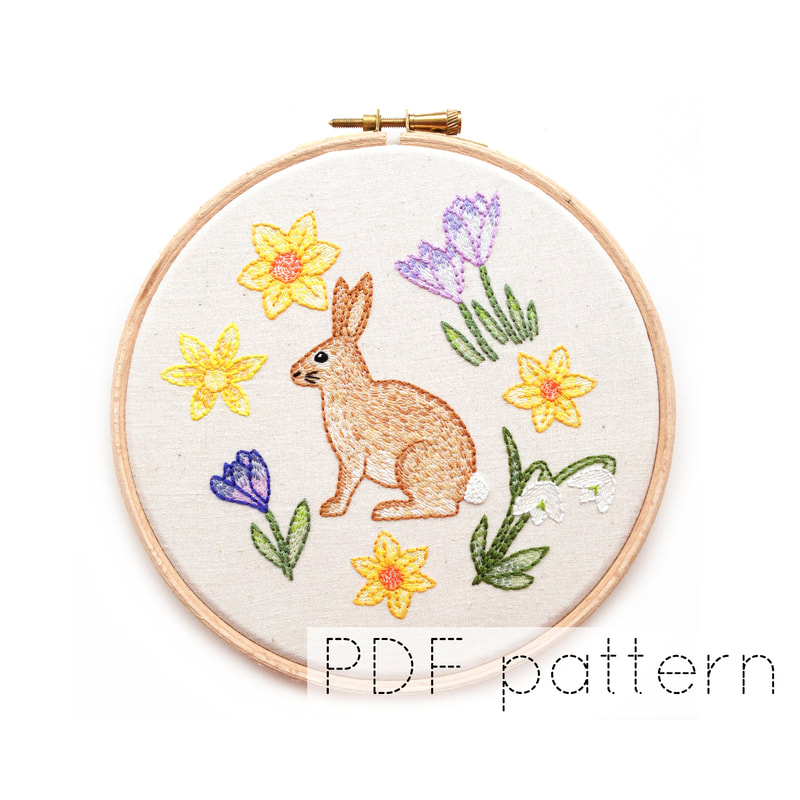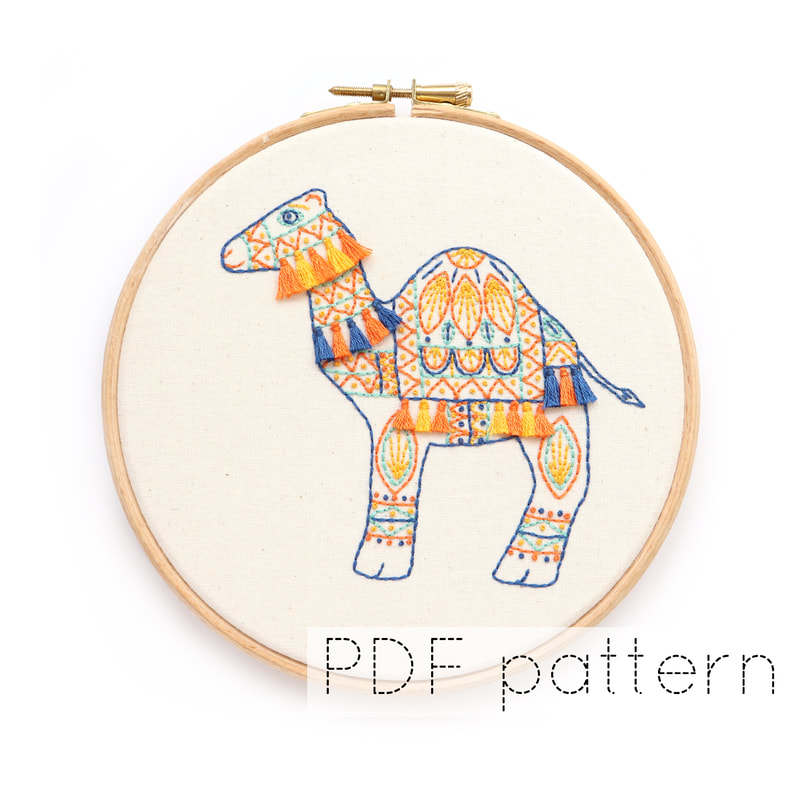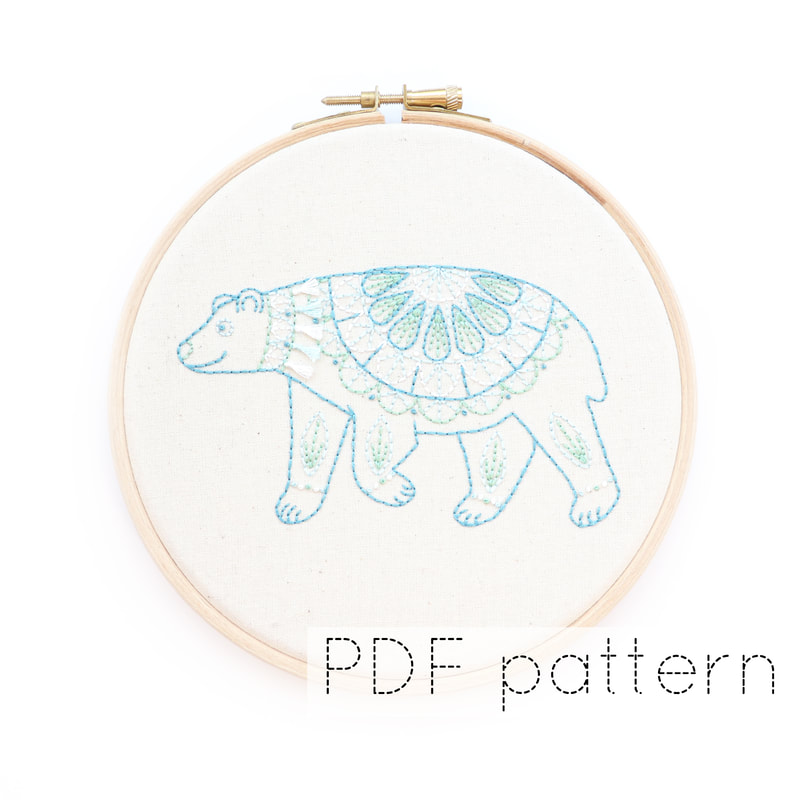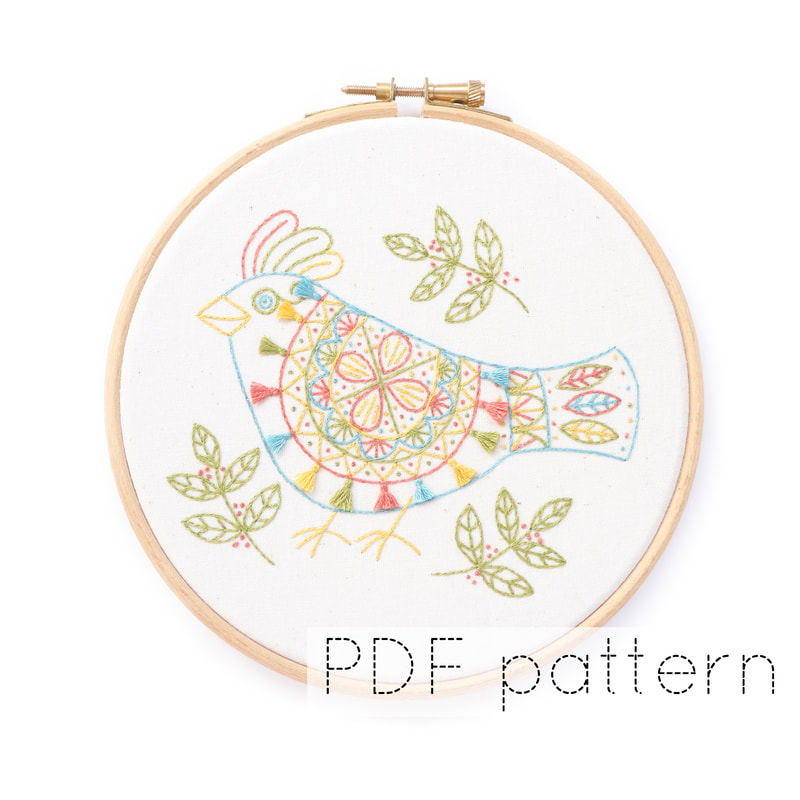Embroidery
After spending a number of years creating mixed media pieces which often included stitch (and this was often my favourite bito to do!) one day I decided to create an embroidery hoop art design of a little blue tit, based on one of my painted paper collages. I enjoyed it so much and it was so well recieved that the focus of my practice shifted to hand embroidery, and I have since gone on to create over 40 patterns; many offered for sale via my Etsy shop, and many featured as projects in magazines.
I love the possibilities of embroidery and the range of marks and textures that can be built up with stitch. My patterns tend to utilise back stitch or stem stitch to 'draw' outlines, before using straight stitches of varying lengths to fill in space and add areas of pattern. I am very inspired by Kantha embroidery; building up areas of colour using small straight/ seed stitches.
I love to create patterns featuring birds; their colours and patterns lend themselves so well to being translated into stitch. I really enjoy working out ways to turn certain details into areas of pattern (such as feather shapes on their wings) and working out how to stylise and simplify certain areas.
Drawing is an important part of my process, and before starting a new pattern I make preparatory drawings which I then use to create the final pattern drawing. In the past each pattern drawing was meticulously created by hand; this could be a challenge at times, as I'd inevitably wobble in the middle of a line that was meant to be straight! I now create my final pattern drawings using vector software; still meticulous work but rather more forgiving!
I have extensive experience in creating both embroidery and felt patterns and articles for magazines and love to work on projects like this, if you would like me to contribute a project or article to your publication, be it a magazine or book, please contact me. To date, my work has been featured in UK magazines including Mollie Makes, Stitch, Love Embroidery, Love Sewing, Sew Inspired and Sewing World, international magazines including Homespun and Inspirations and books including I Love My Dog embroidery.
I really love encouraging and supporting others on their embroidery journeys and I am so touched when people tell me about or send photos of their finished projects created using my patterns.
Instantly downloadable PDF embroidery patterns are available in my Etsy shop for the designs shown below, you can click on an image if you would like to be taken to the Etsy listing. Each pattern is slightly different, please see each individual listing for more information, and see below for frequently asked questions.
After spending a number of years creating mixed media pieces which often included stitch (and this was often my favourite bito to do!) one day I decided to create an embroidery hoop art design of a little blue tit, based on one of my painted paper collages. I enjoyed it so much and it was so well recieved that the focus of my practice shifted to hand embroidery, and I have since gone on to create over 40 patterns; many offered for sale via my Etsy shop, and many featured as projects in magazines.
I love the possibilities of embroidery and the range of marks and textures that can be built up with stitch. My patterns tend to utilise back stitch or stem stitch to 'draw' outlines, before using straight stitches of varying lengths to fill in space and add areas of pattern. I am very inspired by Kantha embroidery; building up areas of colour using small straight/ seed stitches.
I love to create patterns featuring birds; their colours and patterns lend themselves so well to being translated into stitch. I really enjoy working out ways to turn certain details into areas of pattern (such as feather shapes on their wings) and working out how to stylise and simplify certain areas.
Drawing is an important part of my process, and before starting a new pattern I make preparatory drawings which I then use to create the final pattern drawing. In the past each pattern drawing was meticulously created by hand; this could be a challenge at times, as I'd inevitably wobble in the middle of a line that was meant to be straight! I now create my final pattern drawings using vector software; still meticulous work but rather more forgiving!
I have extensive experience in creating both embroidery and felt patterns and articles for magazines and love to work on projects like this, if you would like me to contribute a project or article to your publication, be it a magazine or book, please contact me. To date, my work has been featured in UK magazines including Mollie Makes, Stitch, Love Embroidery, Love Sewing, Sew Inspired and Sewing World, international magazines including Homespun and Inspirations and books including I Love My Dog embroidery.
I really love encouraging and supporting others on their embroidery journeys and I am so touched when people tell me about or send photos of their finished projects created using my patterns.
Instantly downloadable PDF embroidery patterns are available in my Etsy shop for the designs shown below, you can click on an image if you would like to be taken to the Etsy listing. Each pattern is slightly different, please see each individual listing for more information, and see below for frequently asked questions.
Embroidery FAQ
How do your PDF patterns work?
When you purchase a PDF pattern from my Etsy shop, you will be able to download two files: one containing the pattern itself, along with information about how to stitch it, and one containing a stitch guide, which will tell you how to do some basic embroidery stitches. The PDFs will require a programme such as Adobe Reader to open in. It is best to view the pattern at 100% so you are seeing the pages in the size they were intended.
Patterns can be printed to allow them to be easily transferred onto fabric using the method described or a method of your choice, and also to allow you to refer to the instructions off screen. Each page is A4 size, so to ensure your pattern prints at the right size, chose A4 paper and select 'fit to size' The PDFs can also be viewed on phones and tablets which have appropriate PDF viewing software, this can be useful if you like to carry your stitching with you away from the computer.
What if I need more help stitching a pattern I have purchased from you?
You are always welcome to get in touch if you need any extra advice and assistance for stitching a pattern. There is no time frame for this, even if you purchased the pattern a year ago and are only just getting around to stitching it, you are still welcome to get in touch.
Materials and technique
What materials will I need if I want to start doing embroidery?
You will need a piece of fabric, a hoop, a needle, a pair of scissors and thread of some description. I use DMC Mouliné stranded cotton most of the time, as this is really good quality and can be split into strands depending on the thickness of thread you want to use, but many other threads can be used too, including for example machine embroidery thread.
Which needles do you recommend for embroidery?
I personally use size 7 John James embroidery needles for most of my work, as these are easy to thread and just the right size to stitch with. I also use size 10 embroidery needles sometimes, for more detailed work and also for stitching on small beads. I'd encourage you to try different ones to get a feel for what is most comfortable for you to work with.
What fabric do you recommend?
My favourite fabric to stitch on is plain calico, or Robert Kaufman Essex linen in a pale natural colour. I almost always recommend two layers of fabric when stitching a piece which will be finished in a hoop, as adding an extra layer of fabric on the back can help stop threads showing through.
Which hoops do you use?
I use Elbesee wooden embroidery hoops, but I have also used unbranded bamboo hoops in the past. The important thing is that the hoop holds the fabric evenly taught, and is smooth, free from unsightly or uncomfortable splinters.
What kind of embroidery stitches are used in your patterns?
My embroidery patterns generally have outlines worked in backstitch or stem stitch, and then use seed stitch and straight stitches to fill in areas and create areas of pattern. The odd French knot will often find its way in too!
How do you come up with ideas for your pattern designs?
I am primarily inspired by the natural world, particularly birds, so I find a lot of the patterns I design are bird based! I also love to work with folk art inspired pattern and embellishment. I start with an idea and begin making sketches, usually adding colour and stitch notes. I will then work these up into a more final pattern drawing before transferring it to my fabric and starting to stitch. When the embroidery is complete, I take photographs and write it up into a pattern.
How do your PDF patterns work?
When you purchase a PDF pattern from my Etsy shop, you will be able to download two files: one containing the pattern itself, along with information about how to stitch it, and one containing a stitch guide, which will tell you how to do some basic embroidery stitches. The PDFs will require a programme such as Adobe Reader to open in. It is best to view the pattern at 100% so you are seeing the pages in the size they were intended.
Patterns can be printed to allow them to be easily transferred onto fabric using the method described or a method of your choice, and also to allow you to refer to the instructions off screen. Each page is A4 size, so to ensure your pattern prints at the right size, chose A4 paper and select 'fit to size' The PDFs can also be viewed on phones and tablets which have appropriate PDF viewing software, this can be useful if you like to carry your stitching with you away from the computer.
What if I need more help stitching a pattern I have purchased from you?
You are always welcome to get in touch if you need any extra advice and assistance for stitching a pattern. There is no time frame for this, even if you purchased the pattern a year ago and are only just getting around to stitching it, you are still welcome to get in touch.
Materials and technique
What materials will I need if I want to start doing embroidery?
You will need a piece of fabric, a hoop, a needle, a pair of scissors and thread of some description. I use DMC Mouliné stranded cotton most of the time, as this is really good quality and can be split into strands depending on the thickness of thread you want to use, but many other threads can be used too, including for example machine embroidery thread.
Which needles do you recommend for embroidery?
I personally use size 7 John James embroidery needles for most of my work, as these are easy to thread and just the right size to stitch with. I also use size 10 embroidery needles sometimes, for more detailed work and also for stitching on small beads. I'd encourage you to try different ones to get a feel for what is most comfortable for you to work with.
What fabric do you recommend?
My favourite fabric to stitch on is plain calico, or Robert Kaufman Essex linen in a pale natural colour. I almost always recommend two layers of fabric when stitching a piece which will be finished in a hoop, as adding an extra layer of fabric on the back can help stop threads showing through.
Which hoops do you use?
I use Elbesee wooden embroidery hoops, but I have also used unbranded bamboo hoops in the past. The important thing is that the hoop holds the fabric evenly taught, and is smooth, free from unsightly or uncomfortable splinters.
What kind of embroidery stitches are used in your patterns?
My embroidery patterns generally have outlines worked in backstitch or stem stitch, and then use seed stitch and straight stitches to fill in areas and create areas of pattern. The odd French knot will often find its way in too!
How do you come up with ideas for your pattern designs?
I am primarily inspired by the natural world, particularly birds, so I find a lot of the patterns I design are bird based! I also love to work with folk art inspired pattern and embellishment. I start with an idea and begin making sketches, usually adding colour and stitch notes. I will then work these up into a more final pattern drawing before transferring it to my fabric and starting to stitch. When the embroidery is complete, I take photographs and write it up into a pattern.
All content and designs © Chloe Redfern. All rights reserved.
